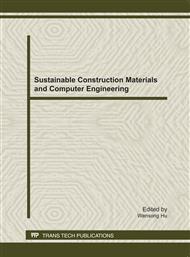p.793
p.797
p.804
p.812
p.817
p.823
p.828
p.835
p.842
Design on Hierarchical Testing System for Unmanned Ground Vehicles
Abstract:
The test system for technical abilities of unmanned vehicles is gradually developed from the single test to comprehensive test. The pre-established test and evaluation system can promote the development of unmanned ground vehicles. The 2009 Future Challenge: Intelligent Vehicles and Beyond (FC’09) pushed China's unmanned vehicles out of laboratories. This paper proposed to design a more scientific and comprehensive test system for future competitions to better guide and regulate the development of China's unmanned vehicles. According to the design idea of stage by stage and level by level, the hierarchical test content from simple to advanced, from local to overall is designed. Then the hierarchic test environment is established according to the levels of test content. The test method based on multi-platform and multi-sensor is put forward to ensure the accuracy of test results. The testing criterion framework is set up to regulate future unmanned vehicle contests and to assess the unmanned vehicles scientifically and accurately.
Info:
Periodical:
Pages:
817-822
Citation:
Online since:
September 2011
Authors:
Price:
Сopyright:
© 2012 Trans Tech Publications Ltd. All Rights Reserved
Share:
Citation:


